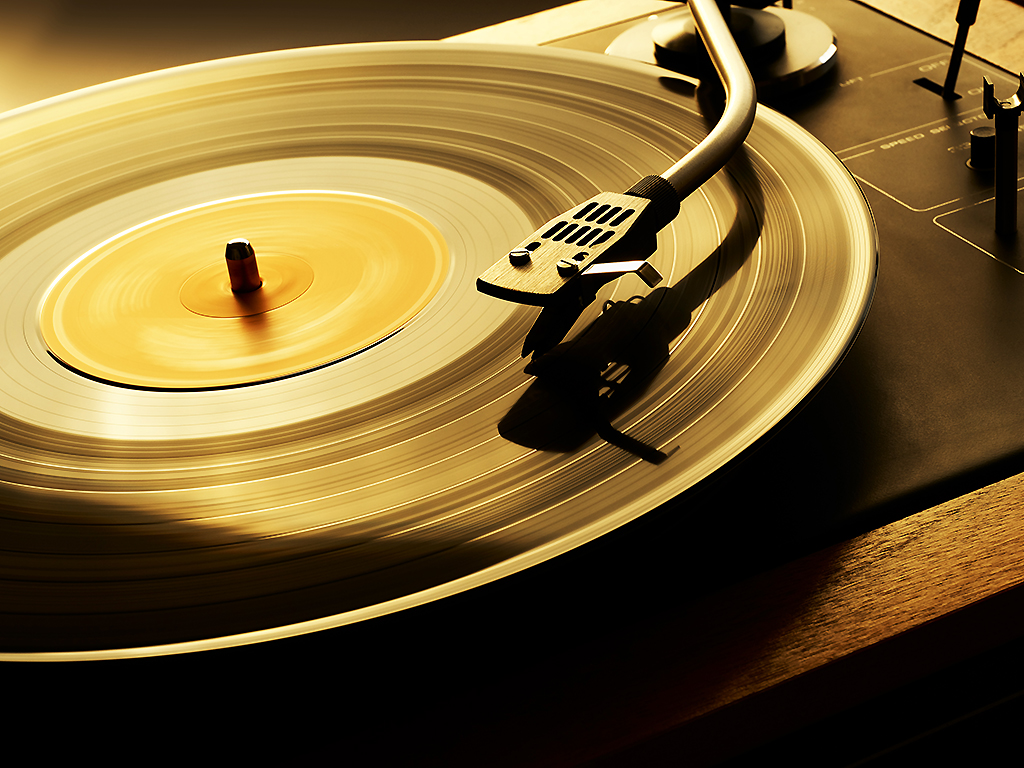Mr. Penner, my seventh-grade science teacher, was trying to teach us about the three states of matter. “The shape of a solid is obvious,” he said, “but a gas or liquid assumes the shape of the container in which it is stored.”

I thought of Mr. Penner when preparing for a TEDx Talk in Winnipeg next month on the way technology shapes music. Tech is the container into which we stuff music. And the results, while subtle, change the very nature of how we make and listen to music.
Before Thomas Edison came along with his phonograph in 1877, music could not be contained. It was evanescent, momentary. Once the performer stopped playing, that rendition was gone forever. Those sounds couldn’t be stored for future enjoyment or study. (Weirdly, Edison didn’t see his invention as a music storage device. For him, the phonograph had a future preserving the great speeches of men, providing audio books for the blind, and perhaps as a telephone answering machine.)
READ MORE: Synth repairman accidentally gets high by touching decades-old LSD
But when others acquired phonographs, one of the first things they did was use it for recording music. As a byproduct of this new gizmo, the length of a popular song started to become standardized.
Before the phonograph, a song or a piece of music was as long as it needed to be. Symphonies went on for an hour or more. Folk songs and ballads continued until the story was finished. Hymns and national anthems could stretch on forever. (The Greek national anthem has 158 verses!)
However, an Edison cylinder could only hold about two minutes of audio. That meant songs had to bend to the capacity of the technology.

Get breaking National news
Things improved a little bit about 20 years later when Emile Berliner introduced his rotating disc. Turning at 78 RPM, it could hold about three-and-a-half minutes — plus it had the advantage of having two sides. Again, music was moulded to fit the container.
For the next half-century, people became accustomed to that limitation when both composing to and listening to music. It didn’t take long for the length of a popular song to became standardized as something under four minutes so it could fit on a record. Our attention spans and expectations for popular music solidified.
READ MORE: Adam Levine leaving ‘The Voice,’ Gwen Stefani taking his place
The next change came with Columbia Records’ introduction of the 12-inch 33 1/3 long-playing vinyl album in June 1948. Capacity jumped to more than 20 uninterrupted minutes per side. Unstrained by the time limit of the 78s, artists were free to explore new types of long-form musical expression, eventually resulting in works like Sgt. Pepper’s Lonely Hearts Club Band and Dark Side of the Moon. Mike Oldfield’s 1973 album, Tubular Bells, features just two songs, one on each side (25:30 and 23:20). The following year, Kraftwerk took an entire side for their opus Autobahn, which takes 22:43 to complete.
Meanwhile, RCA’s 7-inch 45 RPM single picked up where the 78 left off, maintaining that standard song length of something below the four-minute mark. Given our now generations-old attention span for music, that’s what we heard on the radio.
When the CD rolled out worldwide in early 1983, it offered 74 minutes of uninterrupted listening. Many artists felt the need to use up every last usable millimetre on a disc, regardless whether the material wasn’t good enough to warrant inclusion. The thinking was, “If there’s space, let’s fill it.”
The Red Hot Chili Peppers’ 1991 album, Blood Sugar Sex Magik, for example, runs 73:55, leaving a mere five seconds of empty space. Technology later pushed CD capacity to beyond 80 minutes. A label called Bear Family issued a compilation of 32 cigarette-related songs from the 40s and 50s that runs about 86 minutes.
WATCH BELOW: The risky business of music festivals
But that was the ultimate for physical media. When we migrated to the digital realm, virtually all limits disappeared. Digital file formats like MP3s could theoretically get too big to download and store, but if someone else hosts the music, a stream can have infinite length.
Back on March 14 — Pi Day or 3/14 — Canton Becker of Santa Fe, N.M., posted something called Shepard’s Pi, an ambient music piece composed using one-billion digits of pi. Listening to the whole thing would require 999,999 hours or a little more than 114 years.
There is, however, more to just length of songs that have been shaped by technology. Streaming’s effect on music creation and consumption has been profound. In the short time streaming has been with us — let’s call it about a dozen years — things have changed drastically, even insidiously. We’ll examine what that means with part two.
—
Alan Cross is a broadcaster with 102.1 the Edge and Q107, and a commentator for Global News.
Subscribe to Alan’s Ongoing History of New Music Podcast now on Apple Podcast or Google Play










Comments